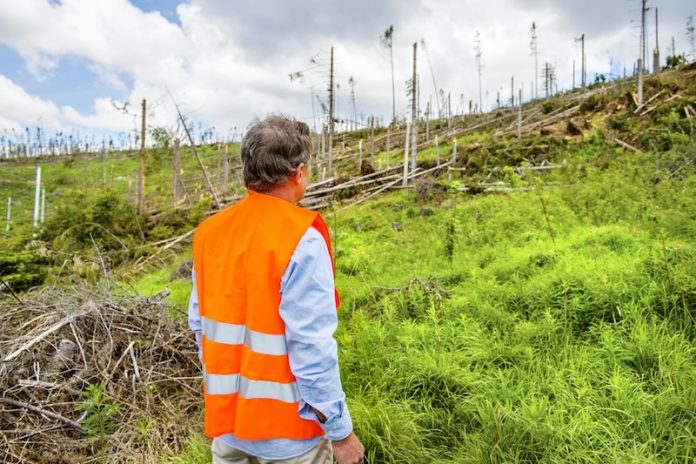
In a long-term study, scientists at the University of Cincinnati have been closely observing the regrowth of a forest in the Harris Benedict Nature Preserve, which was severely hit by an EF-4 tornado in 1999.
The tornado, which traveled through suburbs north of Cincinnati with wind speeds over 200 miles per hour, left a path of destruction, affecting both human communities and natural environments.
This particular preserve, known for its ecological significance and designated a National Natural Landmark, suffered extensive damage.
Over the years, the University’s College of Arts and Sciences has conducted four detailed botanical surveys to monitor the forest’s recovery. These surveys have provided critical insights into how forests respond to such catastrophic events.
A key finding is that while the forest shows resilience in regrowth, the composition of its flora has shifted significantly towards a dominance of nonnative, invasive species, at the expense of native ones.
One invasive species that has become particularly prominent in the affected areas is the Amur honeysuckle, originally introduced from China as an ornamental plant.
This species thrives by leafing earlier in spring and retaining its leaves later into fall than native plants, effectively outcompeting them for sunlight and resources.
Similarly, the Callery pear tree, another nonnative species that has been widely spread through horticultural practices, now forms large stands within the preserve. Recognizing its invasive potential, Ohio has banned the sale of this tree species.
This study’s findings, published in the journal Ecology and Evolution, underscore the lasting impact of major disturbances like tornadoes on biodiversity.
The increase in nonnative species poses challenges for conservation efforts, particularly in urban-adjacent natural preserves like Harris Benedict.
The research also highlights broader concerns about how climate change may be increasing the frequency and severity of such disturbances, making understanding their ecological impacts more urgent.
Professor Theresa Culley, who has been at the forefront of this research, emphasizes the importance of these findings for conservation management.
Culley, who also contributes to statewide and regional efforts to identify and manage invasive species, points out that the study’s insights are crucial for developing strategies to protect and restore native biodiversity in forests facing the threat of invasive species, especially in the context of changing climate conditions.
The Harris Benedict Nature Preserve’s story is a poignant reminder of the complex interplay between natural disasters, human activity, and ecological balance.
It serves as a case study for how ecosystems can be dramatically and enduringly altered by such events, and the need for vigilant, informed conservation practices to address these challenges.
The research findings can be found in Ecology and Evolution.
Copyright © 2024 Knowridge Science Report. All rights reserved.



